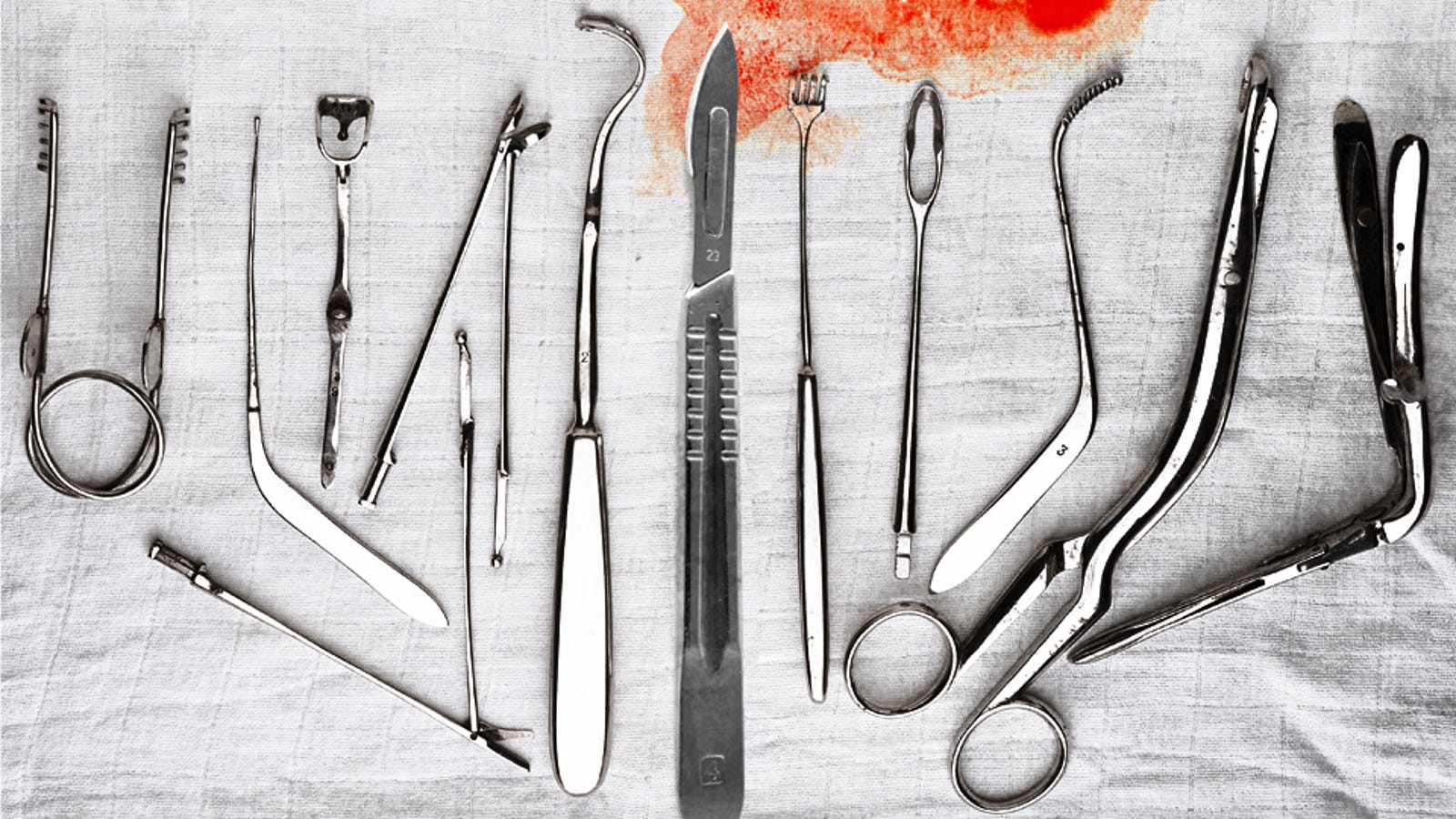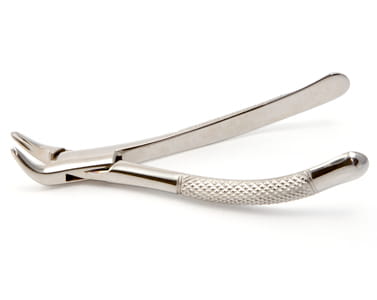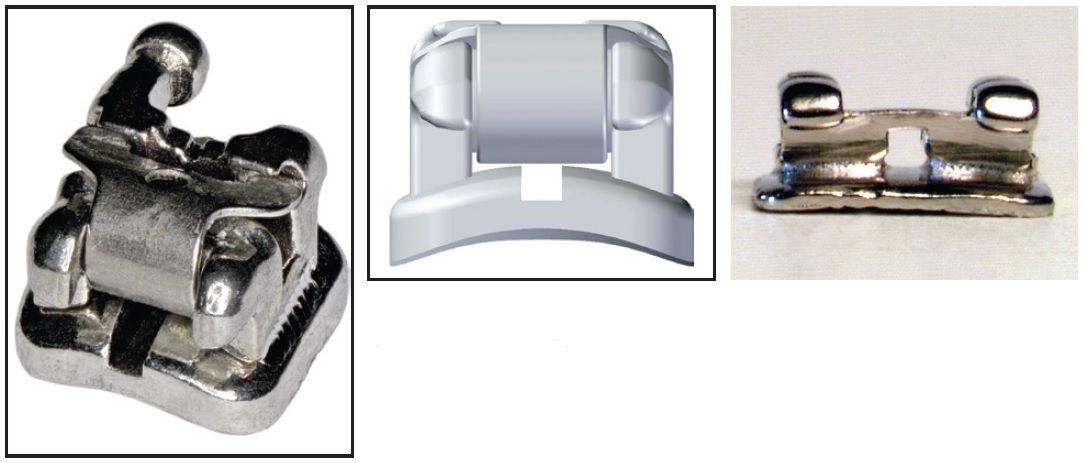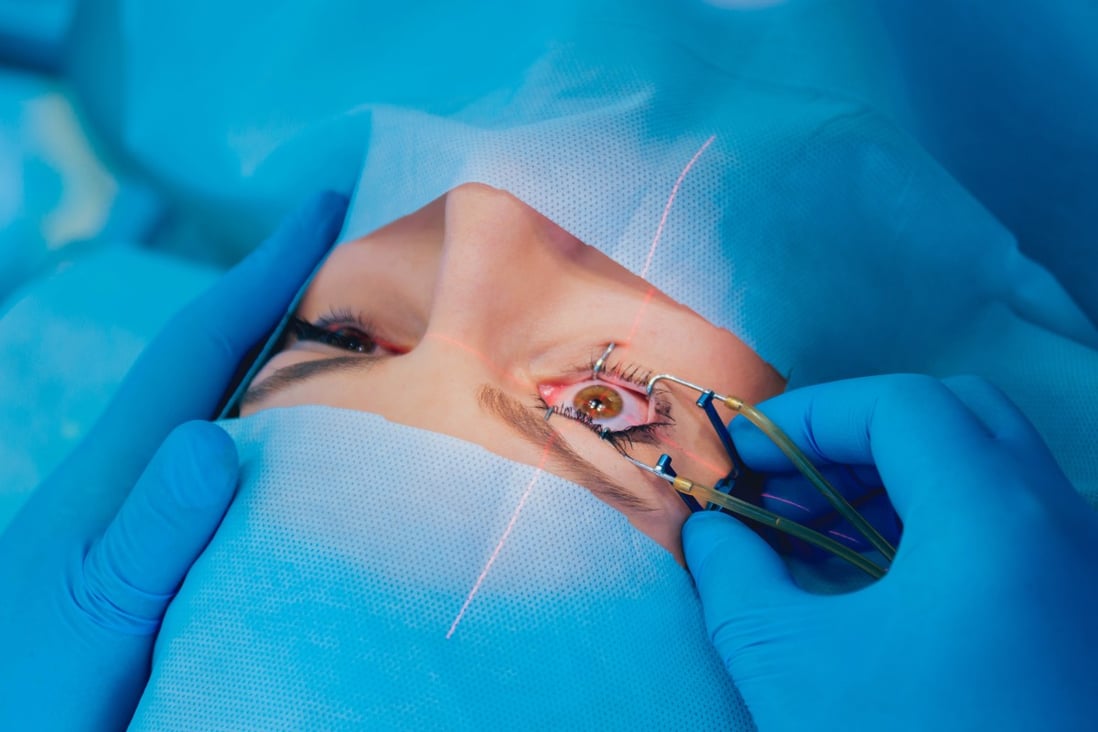V Slot Surgery
INOGEN™ MINI ICD The world’s smallest and thinnest ICD. 1 Boston Scientific provides devices tailored to individual needs. Up to 20% smaller and 24% thinner than some other ICDs on the market, 2 the MINI offers all the power of a Boston Scientific ICD in a device that is the industry’s sleekest and designed for patient comfort. Ventral Slot This is the procedure employed when a disc is compressing a nerve root or an area of the cervical spinal cord. The procedure is done through an approach to the underside of the neck. This allows the surgeon to access the ventral or underside of the cervical vetebral bodies. An inverted V-shaped incision was made where the dorsal slit had been and the two edges were sutured together, thus, reproducing the normal prepuce. The patient was delighted with the results. It could be that this might be an answer to some critics of circumcision. (ouch) which costs about 10 bucks so, pricewise, it might be a wash. I am suspicious of this notice (below) on the Latex Vagina w/ Urinary Feature. An inverted V-shaped incision was made where the dorsal slit had been and the two edges were sutured together, thus, reproducing the normal prepuce. The patient was delighted with the results. It could be that this might be an answer to some critics of circumcision.
Introduction
Once a patient with a cervical intervertebral disc herniation has been deemed a surgical candidate, the surgeon is faced with several options on how to operate. A general rule of thumb is to establish a goal of mass (disc) removal, as this is ultimately the decompressive element of surgery. A challenging decision comes when the herniated disc material is lateralized and residual material may remain in the intervertebral foramen without a carefully planned and executed approach. In these instances, it is not always clear which approach will best allow for spinal cord and nerve root decompression. Also challenging is the current lack of biomechanical studies comparing the instability created by these different approaches or the clinical significance of any such instability.
Ventral approach and ventral slot
The ventral slot is one of the most widely used approaches for spinal cord decompression in veterinary patients with cervical intervertebral disc herniation. Using this procedure, it is very easy to access displaced disc material located within the ventral aspect of the vertebral canal (see Figure 30.1). This procedure was first described in dogs as an alternative to the dorsal approach for laminectomy or hemilaminectomy [1]. Either a ventral midline dissection or a paramedian dissection to the ventral cervical spine can be used. For the midline approach, a ventral midline incision is made and the approach is continued on the midline between the paired sternothyroideus and sternohyoideus muscles. The trachea, carotid sheath, and esophagus are retracted to the left to expose the paired longus colli muscles immediately ventral to the vertebrae [2]. For the paramedian approach, a ventral midline skin incision is made, but the dissection is continued paramedian, between the right sternocephalicus muscle and right sternothyroideus muscle [3]. The sternohyoideus and sternothyroideus muscles, trachea, esophagus, and carotid sheath are all retracted to the left. The paramedian approach may make it less likely to disrupt tracheal blood supply, the right carotid sheath, and the recurrent laryngeal nerve [3]. With either of these ventral approaches, the correct site for the ventral slot is identified by palpating the large transverse processes of C6 and the ventral midline process of C1 and then, using these landmarks, palpating the caudal ventral processes of the cervical vertebrae that mark each interspace between C2–C3 and C7–T1. It is important to review preoperative imaging to identify any anatomical variations in vertebral formula or transitional vertebrae. The longus colli muscle is divided along the midline to expose the ventral aspects of the vertebral bodies and intervertebral disc. A high-speed burr is used to create an opening (“slot”) in the vertebral bodies, centered over the disc space and extending to the dorsal longitudinal ligament. Due to the angulation of the intervertebral disc and end plates, the slot should be centered initially over the caudal aspect of the cranial vertebra rather than over the ventral annulus, with the caudal extent of the slot at the cranial end plate of the caudal vertebra. As the burring is continued dorsally, the slot will end up being centered on the dorsal aspect of the intervertebral disc. This will help avoid disruption of the paired vertebral venous plexus, which deviates laterally over each disc space, and thus reduce the risk for hemorrhage, which can be quite severe and interfere with completion of the disc removal and decompression. After penetrating the dorsal cortex of the vertebral body, the dorsal longitudinal ligament is separated or excised, and the herniated disc material is removed from the vertebral canal using instruments such as a right-angle nerve root retractor passed gently along the ventral aspect of the vertebral canal.
Complications of the ventral slot include hemorrhage from the vertebral venous plexus, instability of the vertebral bodies, erosion of the dorsal tracheal membrane from sutures in the longus colli, and poor decompression due to the limited visibility through the slot created [1, 4–7]. The reason the ventral approach is confined to a slot, and not a larger window that would permit more visualization and room for manipulation of instruments, is because of the potential for vertebral collapse and fracture from an overly aggressive degree of bone removal from the vertebral bodies. This is less a problem in human anterior approaches owing to the short but wide morphology of cervical vertebrae in that species, compared with the long but narrow cervical vertebrae in dogs. The small size of the resultant windows created in dogs, along with the small overall size of many veterinary patients, means that there is very little working room for either visualization or manipulation of instruments in our patients. So while the ventral approach provides the most direct route to ventrally herniated disc material, and without the degree of dissection required for dorsal approaches, it comes with the trade-off of very limited working space. The use of magnification and good lighting can mitigate some of these inherent limitations, but this remains one of the limiting aspects to this approach in dogs.
Dorsal approach and dorsal laminectomy
A dorsal approach to the cervical spine has been described and used for decompression of ventral disc displacements if there is a combined ventral disc displacement and dorsal compression (see Figure 30.2


You may also need
A dorsal slit (often referred to in anthropology as superincision) is a single incision along the upper length of the foreskin from the tip to the corona, exposing the glans without removing any tissue.
An ancient practice,[1] it has been a traditional custom among a number of peoples, particularly Filipinos and Pacific Islanders, probably for thousands of years.

In Western medicine it was used as an alternative to circumcision to relieve conditions such as failure of the foreskin to retract (phimosis) or failure to cover the glans penis (paraphimosis), although a perception of poor appearance limited its popularity. While it is a less invasive surgery than circumcision, it is more invasive than preputioplasty since it leaves the incision open. It is still used when circumcision or other measures are considered impractical or undesirable.
Traditional custom[edit]
Since superincision and circumcision are both forms of genital cutting that expose the glans, it can often be difficult to know which procedure is being described or depicted. Opinion is divided on whether a 4,000-year-old image from Egypt, often described as the first depiction of circumcision, may in fact be of a superincision.[2]
Superincision has been widely practised by people of the Pacific, stretching from Hawaii[3] to the Philippines.[4] However, with increasing urbanisation, traditional rituals have been giving way in many places to medically performed circumcision, and almost entirely so among Islanders living in New Zealand, where a recent survey found there was 'a strong cultural demand from parents'.[5]The most notable exception to Pacific superincision is the Māori of New Zealand, who do not circumcise or superincise,[6] although they have an indigenous term for the latter (ure haea or 'split penis') and their tradition is that they stopped the practice when they arrived in New Zealand.[7]
Medical practice[edit]

Phimosis[edit]
Dorsal slit has a long history as a treatment for adult phimosis,[1] since compared with circumcision it was relatively easy to perform, did not risk damage to the frenulum, and before the invention of antibiotics was less likely to become infected. However, the literature often indicates that despite being 'a simple operation' it was 'not liked by some'[8] or refers to the 'untidy apron-like appearance' it could produce.[9]Dorsal slit is now rare in Western countries as a treatment for phimosis. Standard guidelines suggest conservative approaches first and, should those fail, either circumcision or preputioplasty to both retain the foreskin and relieve the phimosis.[10]
Paraphimosis and other conditions[edit]
In some cases the foreskin may become swollen as a result of paraphimosis (foreskin trapped behind the glans) or other conditions such as severe balanitis. Should reduction of the swelling by conservative methods be unsuccessful, a dorsal slit is a common intervention of choice since circumcision is almost always excluded in such cases.[11][12] While it was formerly recommended that circumcision be subsequently performed once the originating condition has subsided,[13] this appears to be no longer the case.[14]
V Slot Surgery Near Me
Dorsal genital slits in some African tribes[edit]

A variety of 'dorsal slit' circumcision was once predominant amongst the Maasai tribe of Kenya and Tanzania, and is still practised and found in many of the more remote regions of the very large area known as 'Maasailand' generally.
However, the Maasai operation is different in this: rather than a dorsal slit from the opening of the prepuce to the corona, a heart shaped 'oval' is excised from the dorsum of the prepuce and the glans is pushed through this hole. Later the edges of the cut prepuce will heal.
The prepuce is first cut off, leaving only a small part where the main veins are located, which is pulled down and the small hole through which the glans in pushed through is created. The remaining part is left hanging down, but the glans exposed.
Formerly tribes that copied the Maasai like the numerous Kikuyu of Kenya also practised the same form of circumcision. Photos of the operation and result are numerously found in specialized African books, such as Carol Beckwith and Tepelit Ole Saitoti's Maasai.
There are words for the resultant 'prepuaial flap' in the Maa and Gikuyu languages, and possibly in other African tongues. In Gikuyu the word, now archaic, is likely to be ngwati.
V Slot Surgery Cost
Dorsal slit reversal[edit]
According to Goodwin, the dorsal slit operation may be reversed by suturing the cut ends together, which restores the tissue to its normal position and recreates the foreskin:
One patient presented with a dorsal slit because of an acute infection during childhood. All of the normal preputial skin was still present and the patient wished the skin restored to a normal appearance. An inverted V-shaped incision was made where the dorsal slit had been and the two edges were sutured together, thus, reproducing the normal prepuce. The patient was delighted with the results. It could be that this might be an answer to some critics of circumcision. A simple dorsal slit can be performed in patients who have phimosis or severe recurrent infections. At a later date, if they wished restoration, reconstruction to the uncircumcised appearance would be simple.[15]
References[edit]
- ^ abChristianakis E. Sutureless prepuceplasty with wound healing by second intention: An alternative surgical approach in children's phimosis treatment. BMC Urology. 2008;8:6. doi:10.1186/1471-2490-8-6. PMID18318903. PMC2311323.
- ^Tasmania Law Reform Institute Non-Therapeutic Male CircumcisionArchived October 24, 2009, at the Wayback Machine Issues Paper, No. 14, 2009. (p. 14)
- ^Diamond, Milton. Sexual Behavior in Pre Contact Hawai'i: A Sexological Ethnography. Revista Española del Pacifico. 2004;(16):37–58.Milton Diamond incorrectly terms the procedure subincision, though it is clear superincision is meant.
- ^Boyle, G and Ramos, S (2000). Ritual and Medical Circumcision among Filipino boys: Evidence of Post-traumatic Stress Disorder, Humanities & Social Sciences papers, Bond University (p. 5)
- ^Afsari M, Beasley SW, Maoate K, Heckert K (March 2002). 'Attitudes of Pacific parents to circumcision of boys'. Pacific Health Dialog. 9 (1): 29–33. PMID12737414.
- ^Circumcision and Māori by Valentino Križanić
- ^Young, H & McGrath, K (2001). 'A review of circumcision in New Zealand'. In Hodges, Frederick Mansfield; Denniston, George C & Milos, Marilyn Fayre (eds.). Understanding circumcision: a multi-disciplinary approach to a multi-dimensional problem. New York: Kluwer Academic/Plenum Publishers. p. 130. ISBN0-306-46701-1.
- ^Editorial. A ritual operation. Br Med J. 1949-12-24;2(4642):1458-1459. doi:10.1136/bmj.2.4642.1458. PMID20787713.
- ^Welsh, Fauset. Indications for infant circumcision. Br Med J. 1936-10-10;2(3953):714. doi:10.1136/bmj.2.3953.714. PMID20780160.
- ^Yachia, Daniel. Text Atlas of Penile Surgery. Informa Healthcare; 2007. ISBN1-84184-517-5. p. 16.
- ^Thiruchelvam N, Nayak P, Mostafid H. Emergency dorsal slit for balanitis with retention. Journal of the Royal Society of Medicine. April 2004;97(4):205–6. doi:10.1258/jrsm.97.4.205. PMID15056750. PMC1079370.
- ^Kessler CS, Bauml J. Non-Traumatic Urologic Emergencies in Men: A Clinical Review. The Western Journal of Emergency Medicine. November 2009;10(4):281–7. PMID20046251.
- ^Warner E, Strashin E. Benefits and risks of circumcision. Canadian Medical Association Journal. November 1981;125(9):967–76, 992. PMID7037142.
- ^McGregor TB, Pike JG, Leonard MP. Pathologic and physiologic phimosis: Approach to the phimotic foreskin. Canadian Family Physician. March 2007;53(3):445–8. PMID17872680. PMC1949079.
- ^Goodwin WE. Uncircumcision: a technique for plastic reconstruction of a prepuce after circumcision. J Urol. 1990;144(5):1203-5. doi:10.1016/s0022-5347(17)39693-3. PMID2231896.